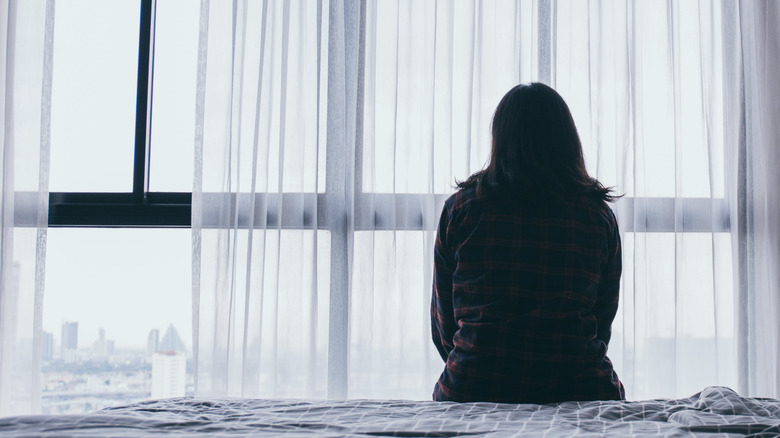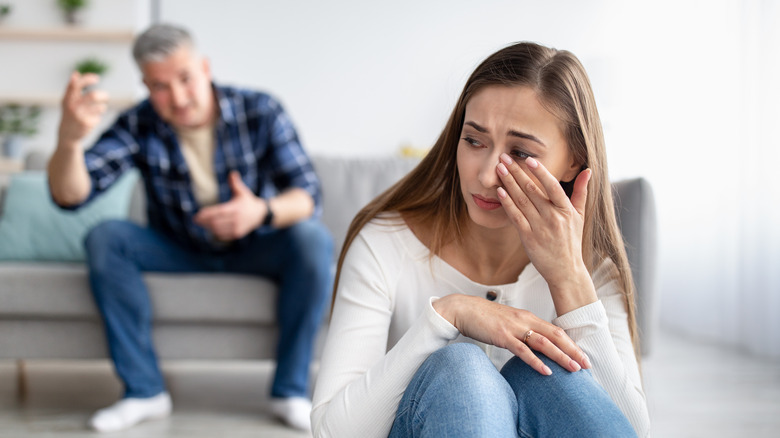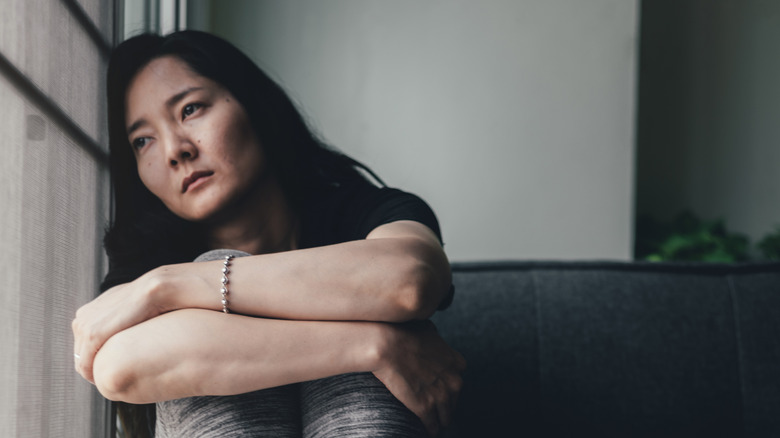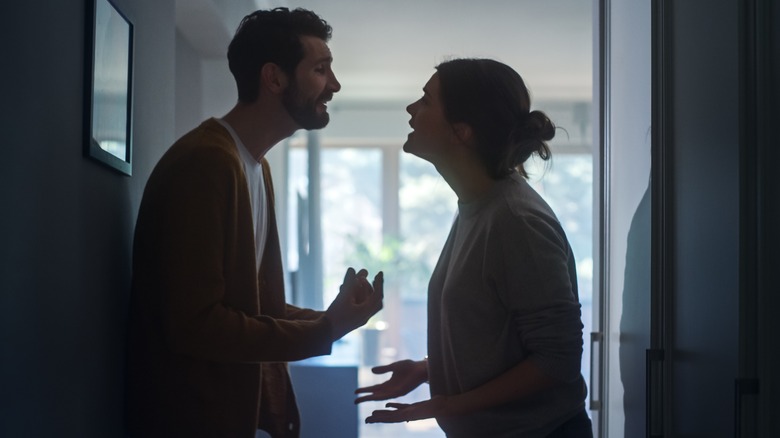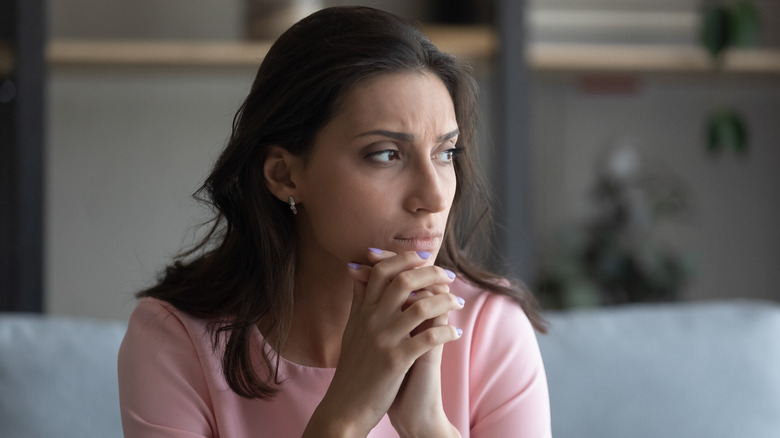Crime Analyst's Laura Richards Explains How Coercive Control Is 'Much More Than Emotional Abuse'
The deadliest forms of domestic violence often only leave invisible injuries until it's too late. You've seen these stories played out in podcasts and documentaries and probably know many victims by name; Gabby Petito, Jennifer Magnano, Jennifer Dulos, and Susan Powell are all women whose disappearances and murders have been dissected and discussed on an ever-growing number of true crime podcasts. While the way stories are told differs greatly depending on what program you tune into, there's a common thread of abuse tactics that not only ties these stories together but highlights just exactly how deadly domestic violence can be.
Unfortunately, in many parts of the United States, the type of abuse that led to the murders of Petito, Dulos, and Magnano is still legal. Connecticut only recently joined a handful of states who consider coercive control — a form of psychological violence — domestic abuse, per Ms. Magazine. In both cases, these women were murdered by their estranged husbands. Dulos even went so far as to try and get a restraining order, but Ms. Magazine reports she was denied because there was no evidence of physical abuse.
To get a better understanding of what coercive control is and why it's costing women their lives, we turned to renowned criminal behavioral analyst Laura Richards. On her podcast "Crime Analyst," Richards has analyzed "Bad Vegan" and, more recently, the murder of Gabby Petito, using them as chilling examples of why coercive control needs to be taken seriously.
Understanding emotional abuse
Different forms of emotional abuse, while they don't leave physical signs, are incredibly damaging for the victim. According to the National Domestic Violence Hotline, emotional abuse is used to break down the target's self-esteem and self-worth in order to "create a psychological dependency" on the abuser. This conditioning for dependency is done through a variety of tactics, PsychCentral explains, including humiliation, guilt-tripping, gaslighting, and isolating victims from friends or family.
The Office of Women's Health adds that abusers can start relationships with "a lot of love and attention, including compliments and requests to see you often, in the beginning of a relationship." The goal is to make victims feel like it's the "two of them against the world." If a victim tries to take legal action against their abuser, the abuser will build a defense using text messages and pictures showing the victim seeming happy, per Forbes.
In recent years, experts and advocates have identified not only a subtype of emotional abuse but have found that, as criminal behavioral analyst Laura Richards told us in an email, this type of abuse is about "unfreedom" and "the utter domination of another." A recent study published by criminology expert Dr. Jane Monckton Smith even found that this specific type of domestic abuse was a major step in an eight-step pattern of domestic violence turning into murder (via BBC). In fact, new research shows the current number one cause of death for a pregnant person is domestic violence.
Defining coercive control
In raising awareness for how dangerous coercive control can be, experts have been working to better define and explain what it is for politicians, law enforcement, and victims. On her website, Laura Richards defines coercive control as, "a strategic pattern of behavior designed to exploit, control, create dependency, and dominate." She adds that this is done through "micro-managing" a victim's life by using love bombing, gaslighting, isolation, economic control.
Talking to Healthline, Wendy L. Patrick, PhD — a career trial attorney and expert in criminal law — explains that abusers do this through "attempts to make themselves omnipresent," especially through surveillance and boundary violation. In heterosexual relationships, Healthline adds this behavior can be seen through forcing victims to behave within set gender roles, with women being manipulated into leaving their careers to have children and take care of the home. This extends into sexual activity as well, with victims reporting they were forced to have sex and perform different sexual activities, usually with the abuser taking photos or video during that can be used against the victim later.
But the implementation of control doesn't happen overnight; Richards warns on her website that the change is gradual and usually begins once the victim is deeply emotionally invested in the relationship. New rules and consequences usually only apply to the victim, too.
Too often, it's coercive control and other forms of emotional abuse that end up keeping victims trapped in an abuse cycle, the New York Times reports.
The effects of coercive control
Carmen Gill, a professor at the University of New Brunswick, told the Globe and Mail, that coercive control can be boiled down to power games. "It's gaslighting," he said, "lies, blaming, cruelty, intimidation — all those things that we don't necessarily recognize as a form of violence." These behaviors can leave victims feeling shame and guilt, which Women's Law explains are feelings that can keep a victim trapped inside an abuse cycle. Often, victims not only stay believing they can change the abuser, but they internalize the idea that they deserve how they're treated.
But unlike physical violence, psychological and emotional violence doesn't leave bruises or broken bones. Laura Richards, who has worked on countless cases of domestic violence, told The List that the victims she's talked to say the "psychological damage and harm stays with you forever." She adds that many victims also "question what is real and what is not," finding it difficult to trust their own perception of reality — one that used to be in constant conflict with what their abuser wanted them to live in.
While there might not be bruising or broken bones, PsychCentral points out that many victims of emotional abuse do report physical symptoms, like chronic body aches or heart palpitations. In future relationships, victims may be prone to a simultaneous need for codependency and fear of abandonment, especially in situations where distance and the silent treatment were used as "punishment" for victims.
Why coercive control is so dangerous
During a previous interview with Hollywood Reporter, behavioral analyst Laura Richards explained that part of the reason coercive control is so dangerous is because of how altruistic and empathetic victims typically are. In episode 70 of her podcast, "Crime Analyst," Richards expands on this further, warning that introverted, isolated people are often "primary targets" of exploitation of narcissists and psychopaths. When these abusers do reach out to potential new victims, Richards says, "the setup will happen on day one of contact. They will already have a plan in their minds, and they will already be testing boundaries."
Psychology Today adds abusers are often disguised as someone with "White Knight Syndrome." The abuser will swoop in and seemingly solve all of the victim's problems, from supporting them financially to helping them feel safer through setting up surveillance in their homes. But the main goal, Richards says, is to isolate and control.
Richards also points out women have actually been raised in a society that grooms them from an early age to be the perfect victim of coercive control. "Every message for a girl growing up is to be kind, to be empathetic, to put others' needs above your own," she told the Hollywood Reporter. "And even in relationships, we are taught to be the homemaker, the nurturer — and when we're not, people judge us as being very cold." Richards adds that men, however, don't appear to be judged the same way.
If you or someone you know is dealing with domestic abuse, you can call the National Domestic Violence Hotline at 1−800−799−7233. You can also find more information, resources, and support at their website.
